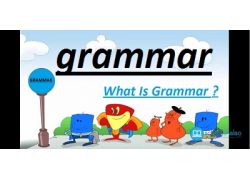Tutorial Library
Learning Point
Adjectives
Adjectives
Adjective is a word that modifies (gives more information about) a noun or pronoun.
For example, tall man, old house, red car. The words “tall, old, red” are adjectives which give more information about nouns “man, house, and car” in these examples.
More than one adjective can also be used for a single noun in sentence.
Examples.
The beautiful girl entered into the room.
The tall, beautiful girl entered into the room.
The tall, thin, beautiful girl entered into the room.
The tall, thin, beautiful and intelligent girl entered into the room.
An adjective gives information about the colour, size, characteristic, quality, quantity or personal traits of a noun or pronoun.
Some examples.
White, red, black, green, purple, yellow, orange, brown, and black are adjectives because they mention the colour of noun or pronoun.
Beautiful, pretty, ugly, thin, slim, fat, tall, and short are adjectives and they describe physical characteristic of a noun or pronoun.
Intelligent, brave, courageous, determined, exuberant and diligent are adjective and they describe the personal traits of a noun or pronoun.
Use of adjective in sentence.
Adjective is used in sentence at two places depending upon the structure of sentence.
-
Before noun
- After some verbs (After stative verbs like seem, look, be (when used as stative verb), feel etc)
Use of adjective before noun (Examples)
He ate a delicious mango.
She bought a red car.
A fat man was running in the street.
I saw a cute baby.
I don’t like hot tea.
They live in a small home.
Poor can’t afford expensive clothes.
Severe headache and fever are symptoms of malaria.
He is facing a difficult problem.
Use of adjective after verbs.
Adjectives may be used after stative verbs (i.e. seem, look, sound, taste, appear, feel, be). Adjective are used after such verbs which behaves like stative verbs.
For example, Iron is hot
“Hot” is adjective in the above sentence which comes after “is” and “is” behaves like a stative verb in this sentence. “Hot” after verb “is” but it tells us about the noun (subject) “iron”
Examples.
Your problem seems difficult.
That book was good.
This pizza tastes delicious.
The story sounds interesting.
He is stupid.
The man became angry.
She looks attractive.
Degrees of Adjectives and their use.
There are three degrees of adjectives.
1. Positive Adjective 2. Comparative Adjective 3. Superlative Adjective
Some Examples:
Positive |
Comparative |
Superlative |
|
Big |
Bigger |
Biggest |
|
Great |
Greater |
Greatest |
|
Short |
Shorter |
Shortest |
|
Old |
Older |
Oldest |
|
Large |
Larger |
Largest |
|
Happy |
Happier |
Happiest |
|
Lucky |
Luckier |
Luckiest |
|
Heavy |
Heavier |
Heaviest |
|
Beautiful |
More beautiful |
Most beautiful |
|
Horrible |
More horrible |
Most horrible |
|
Good |
Better |
Best |
|
Bad |
Worse |
Worst |
|
Little |
Less |
Least |
|
Many |
More |
Most |
Use of comparative adjective.
Comparative adjectives are used to express characteristic of one thing in comparison to another thing (one thing). It makes comparison between two things (only two things not more than two).
Word “than” is mostly used after comparative adjective but sometimes other words “to” may be used after comparative adjective. See the following examples.
Examples.
She is taller than Mary.
A cup is smaller than a glass.
He is junior to me.
Chinese is more difficult than English.
Paris is more beautiful than New York.
Use of Superlative adjective.
Comparative adjectives are used to express characteristic of one thing in comparison to other things (many things). It makes comparison among things more than two. Superlative is the highest degree of a thing in comparison to other things. A superlative adjective means that a object is surpassing all others (things in comparison) in quality or characteristic. For example, John is the most intelligent student in his class. It means John is surpassing all other students in his class and no other student in his class is as intelligent as John.
Article “the” is used before superlative degree. “In” or “of” etc is used after the superlative and modifying noun in sentence.
Examples.
Bills Gate is the richest person in world.
Brunel is the most beautiful hotel in England.
Mount Everest is the highest mountain in world.
She is the tallest girl in class.
Our generation is the most modern.
His house is the biggest in the street.
The winter is the coldest time of year.
Very Useful (0)
Useful (0)
Not Useful (0)
Please login to your account by completing this form
Reset Your password
Please enter the email address you signed up with and we'll send you a password reset link.
A reset password link has been generated and will be sent to you via email.
You can then follow that link and select a new password.
Completing that action will allow you to reset your password and then you can insert a new one.
Please enter the email address you signed up with and we'll send you a password reset link.
A reset password link has been generated and will be sent to you via email.
You can then follow that link and select a new password.
Completing that action will allow you to reset your password and then you can insert a new one.





